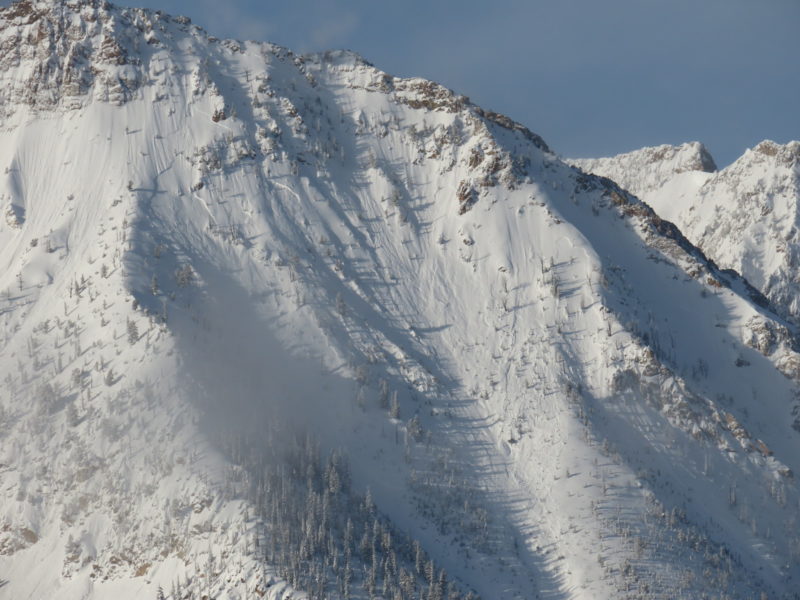Basic Information
Observation Details
Observation Date:
December 24, 2021Submitted:
December 25, 2021Observer:
SAC - VandenBos, Berry (both off duty)Zone or Region:
Galena Summit and Eastern MtnsLocation:
Spring/Cherry divide (7,000-9,500', S-SW-W-NW)Signs of Unstable Snow
Recent Avalanches?
YesCracking?
IsolatedCollapsing?
IsolatedSnow Stability
Stability Rating:
PoorConfidence in Rating:
ModerateStability Trend:
SteadyMedia/Attachments







Advanced Information
Weather Summary
Cloud Cover:
ClearWind:
LightNew/Recent Snowfall:
HST 30cm (?)Clouds diffusing in the morning and rebuilding in the late afternoon. Calm to light winds throughout tour, which ended near sunset. No blowing snow observed in Boulders, but tons of evidence of wind transport from the previous day. Snowing S-1 when I got back to my rig around 1700.
Snowpack Observations
Starting with the surface: Looked like about 30cm of new since the start of the storm on 12/22, upper 10cm were low density and had fallen overnight, without wind, as temperatures dropped. Solar radiation and calm to light winds allowed for another round of crusts to form on solars. We encountered these when they were in the unfrozen state so I'm not exactly sure what the nature of these crusts will be, but my hunch based on temps and what happened last week that they will be radiation recrystallization crusts. For those keeping track, we have 3 crusts in the upper snowpack in the mountains south of the pass. The RadRx crusts that formed on 12/17 and were buried on 12/19 (#1). The ambient temp+solar crusts that formed 12/20 and 12/21 and were buried on 12/22 (#2). And the crusts that formed today (12/24) and were buried starting on 12/24 (#3). Traveling north, these crusts are more irregular in distribution. #1 is spotty to absent, #2 is widespread at lower elevations, #3 is unknown. Kind of wild to be building and burying a crust in the middle of a multi-day storm in December, but here we are. More complexity by the day.
Slab overlying 12/11 is 75cm in this area and grades relatively smoothly from F- at the top to 1F at the base. We were looking for the character of this layer where it would not be as bad (warmer, more solar radiation) and we found that even in these locations it was fairly ugly, producing ECTPs with moderate to hard force in every one of our 6 ECTs. In these areas, the layer presents as 2-3mm facets on top of an aerated, ambient temperature+sun crust. These grains are showing some signs of rounding, but I'm a long way from feeling remotely comfortable with them. And, to beat a dead horse: this is where 12/11 would be at its strongest...
We did not experience any collapsing until we climbed above about 8,500' and rotated to a slightly cooler slope (W/NW). Here we experienced multiple collapses, some were just fresh wind dunes, others were deeper and traveled at least 100'. In one location the snowpack collapsed every time we traveled along the skin track.

Avalanche Problems
| Problem | Location | Distribution | Sensitivity | Size | Comments |
|---|---|---|---|---|---|
 Persistent Slab
Persistent Slab
|
|
Weak Layer(s):
Dec 11, 2021 (FC)
Comments: Rose shaded based on where problem is known to exist and based on our findings from today. |
Terrain Use
Avoiding avalanche terrain and terrain threatened by avalanche hazard from above.
